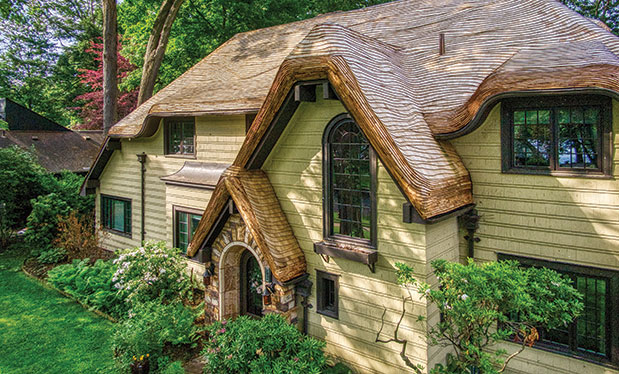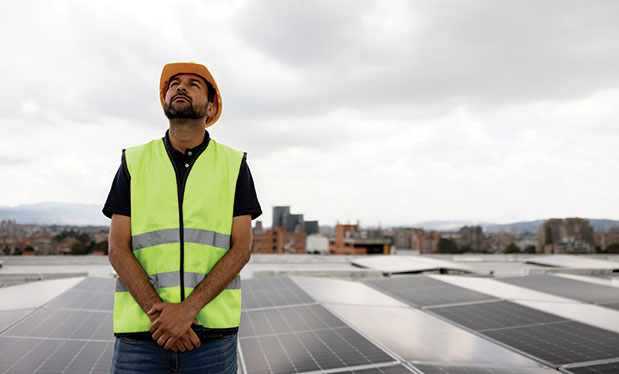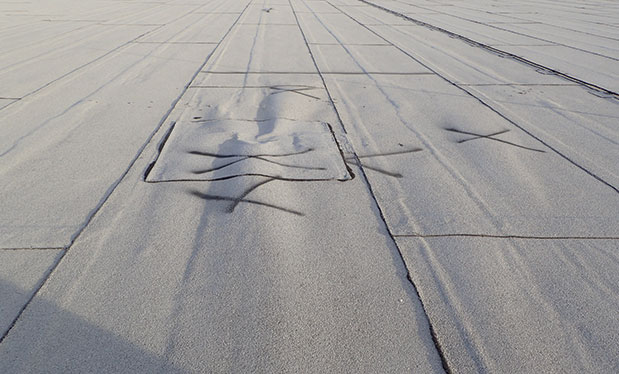
There are new people entering the roofing industry, which is good and necessary as our industry continues to grow and replenish those retiring from the ranks of the old guard. But there seems to be a problem conveying some lessons learned and information gathered among roofing contractors, consultants and manufacturers alike.
Many new to the industry may not have wielded a mop loaded with hot bitumen, know the unmistakable smell of a hot kettle, or heard the snap and crackle of hot asphalt being mopped on a substrate during a cool morning. This is a result, in no small part, of the shift at the turn of the century from asphalt to single-ply membranes and low-rise foam adhesives.
But for those who still work with hot asphalt, one risk is always present: blisters. Roofing workers used to know how to spot a blister, repair a blister and how to avoid making them. But even that knowledge is fading. And because blisters are not unique to asphalt-based roof systems, I would like to review blister research, types of blisters, what causes them and how to avoid them.
Research
Blisters have been a topic in roofing research for almost 100 years. The first publication I know of that addressed blisters was published just after World War II. Professor Clarence Lund (the same C.E. Lund whose research helped establish the 1:300 ventilation ratio for steep-slope roofing) at the University of Minnesota, Minneapolis, published Principles Affecting Insulated Built-Up Roofs in 1952. In 1959, James McCawley’s book Roofing discussed blisters in more common terms and expanded on the topic. However, McCawley heavily referenced Lund’s work. Interestingly, they both identified how water vapor exacerbates blister growth and formation.
In 1960, the National Research Council published A Study to Improve Built-Up Roofs in which the paper “A Theory of the Mechanism of Blistering” by Warren Warden was included. Warden goes into great detail and effort to establish the cause and behavior of blisters.
Several interesting conclusions came from this work. The first was confirmation that roof blisters are composed almost exclusively of air and water vapor; no hydrocarbons or volatile gases were typically present. Second, Warden identified the gauge pressure inside blisters could be positive and negative compared with the surrounding atmosphere. Blisters under the effect of nighttime radiative cooling of roof membranes generally will cause a negative gauge pressure and deflate. Conversely, heat generated by solar loading and warmer daytime temperatures will cause positive gauge pressure, and a blister will inflate. Finally, Warden opined blisters had fissures that allowed them to exchange a small amount of gases as these pressures changed.
Several decades later, in 1987, Walt Rossiter, a technical researcher, and others examined the gases found in blisters on built-up roof systems installed above polyurethane foam boards. (Polyurethane foam boards were the forerunner to modern polyisocyanurate foam boards.) The change from polyurethane to polyisocyanurate was necessitated by the need for more fire resistance provided by polyisocyanurate. In his research, Rossiter found a small amount of chlorofluorocarbons in the blisters. These CFC gases were the blowing agents present in the polyurethane. However, a majority of the gas found inside the studied blisters were still atmospheric gases and water vapor.
Research on blistering seemed to be quiet until the early 1990s when blistering in polymer-modified bitumen sheets became a pressing technical issue. In 1998, NRCA and National Research Council Canada published “Investigating the cause of blistering in SBS polymer-modified bitumen roofing membranes.” This research confirmed the findings of earlier works and explored new variables. The research led NRCA to issue the following recommendations in an interim report: “Consider repairing blisters that occur in high traffic areas. Repair should also be considered if a blister has pulled apart a seam by about one-third or more of the seam width.” This effectively set guidance for when to leave blisters alone and when to repair them.
The NRCA Repair Manual for Low-slope Roof Systems, 2nd Edition provides additional guidance regarding blister assessment and repair. The manual recommends repairing blisters if they are open, have excessive loss of surfacing, have exposed reinforcement or have fatigue cracking around them.
In the 1990s, other researchers made important contributions on adhesion tests for polymer coatings and described the mechanics of the blister testing in closed-form equations for the “interfacial fracture energy.” This allowed blisters to be explained mathematically.
Blister types
There are three types of blisters, and they are not mutually exclusive. You potentially could observe more than one type in the same roof area. The first type is the plate, or pancake, blister. This classic blister shape typically is the size of a dinner plate or larger. A plate blister is one continuous air pocket. Some plate blisters can be so highly pressurized they can withstand a person standing on them like an air mattress. Photo 1 shows a plate blister in the field.
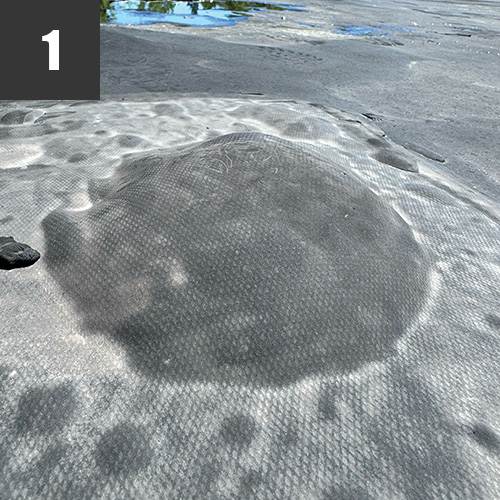
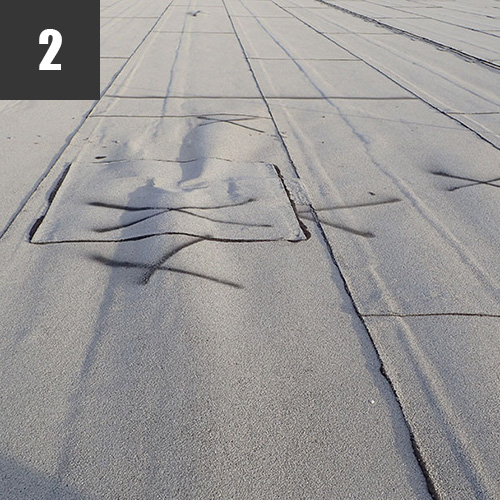
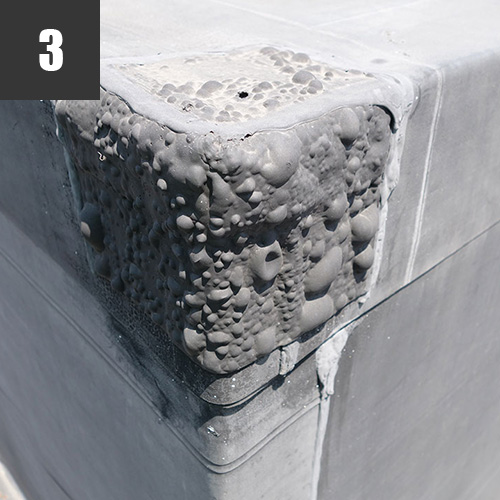
The next type of blister is the linear blister, which commonly is found where rolled membranes or felts are layered and or installed with staggered laps. The assembly and stagger can lead to a systemic issue where a blister forms along the lap of two layers of felt or polymer-modified bitumen cap sheet, base sheet or vapor retarders. Linear blistering was the primary concern in NRCA’s 1990s work. Photo 2 shows a linear blister along a lap.
The third blister is small but prevalent: the rash blister. Rash blisters are small, typically ¼ to ½ of an inch in size. They are tightly packed together in an area and can be found on most types of roofs. Most commonly they are seen at seam tapes, detailing tapes or liquid coatings/membranes. These can even occur on asphalt shingles, particularly when an asphalt appliqué is used during the manufacturing process. Photo 3 shows a rash blister.
What causes them?
In the simplest terms, a blister is a confined air pocket within the layers of a roof system. For example, blisters can occur between the base sheet and cap sheet of a polymer-modified bitumen roof system (see Photo 4). They also can occur between a vapor retarder and concrete deck and have been observed with single-ply membranes adhered directly to lightweight insulating concrete. Blisters even can occur between an uncured adhesive and single-ply membrane (see Photo 5).
The physics of what occurs inside a blister is generally related to the Ideal Gas Law. If you took high school chemistry, you may remember the relationship between pressure, volume and temperature for a given amount of a gas. (To view the equations I discuss, see “The equations.”)
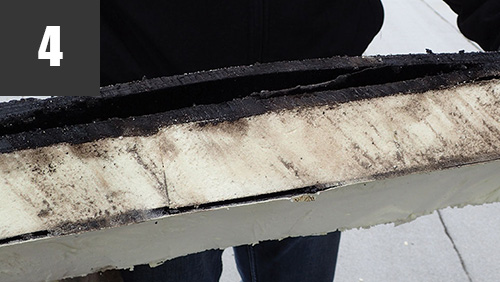
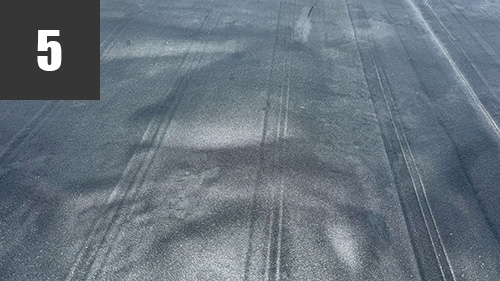
The Ideal Gas Law is a cornerstone of our physical world. For our purposes, we can assume if volume doesn’t change and the amount of gas in the blister is the same, we are left with pressure equals temperature. This goes back to Warden’s early work. If temperature goes up, pressure must go up. When the temperature goes down, pressure must go down. This is the most basic description of a blister. If we add volume, as pressure goes up and down, the volume of the blister will grow and shrink accordingly with membrane’s elasticity.
If the pressure inside a blister grows and places sufficient stress on its perimeter, there will be an adhesion failure at the perimeter of the confined space and the blister will grow.
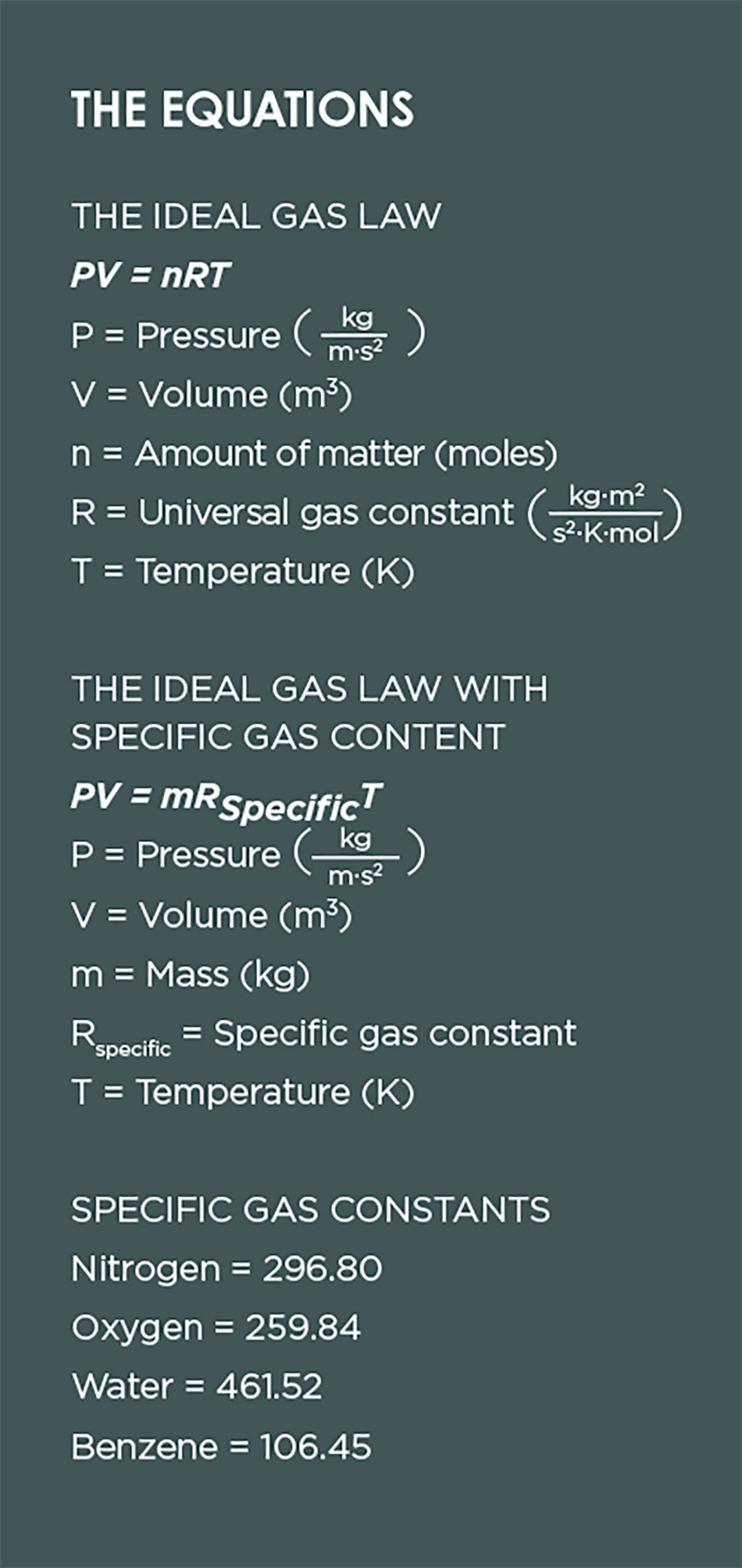
Think of this like a ratcheting effect. As the daily heating cycle is applied, pressure can expand a blister to equilibrium to balance the pressure exerted inside the blister and the confining forces of the membrane and its adhesion to the substrate. The blister will continue this cycle of growth, drawing in more air and water vapor nightly, as available, until an equilibrium has been achieved.
Although the Ideal Gas Law dictates the inner workings of a blister, those of us who have been around for a while know wet substrates and water make blisters worse. The pressure of several gases, such as nitrogen, oxygen, water vapor and benzene (benzene is used as a solvent in roofing adhesives and cleaners) can be strongly affected by temperature. But water vapor is by far the most influential.
One way to understand the significance of water vapor is to consider a unit mass, such as a kilogram of each gas. Water vapor is twice as potent in a blister as air (nitrogen and oxygen) and four times more potent than benzene. This is one major reason why water in a roof system makes blisters worse. Water vapor has a pronounced effect because a rise in temperature makes water-laden air twice as pressurized as dry air. Kilo per kilo (or pound for pound), water is twice as bad for pressurizing blisters.
There is another major reason water can lead to blisters, which has to deal with the creation of a void in a roof system. Remember, there needs to be a confined volume of gas to create a blister. Water can create this void when a worker applies hot bitumen over a substrate with elevated water content. Water will rapidly vaporize with heat, create voids and prevent the typical bonding process, leaving an area of unbonded bitumen that can become pressurized as moisture migrates.
This reaction is similar to what is occurring in Photo 5. A void should and typically does collapse, and a bond is made as the excess moisture moves out and the water-based adhesive cures (dries) over the top of a gypsum cover board. But in other roof system types, a void could be present as a result of various issues, including a wet substrate, and moisture will migrate in as the blister grows to equilibrium.
Another major point to consider in blister formation and growth is temperature. Numerous voids are created when a sheet, such as a self-adhering vapor retarder, is applied to a concrete roof deck. It doesn’t help that many vapor retarders have poor solar reflectivity and when exposed to sun they dramatically rise in temperature. As discussed, if temperature increases, pressure and volume need to rise to balance the equation.
The solution for a blistered vapor retarder is to place insulation over it. The insulation will regulate the temperature of the vapor retarder; the blisters should collapse as the temperature component is removed and the vapor flow can return to the interior of the building to be handled by the HVAC system. This phenomenon has been observed in the field.
Avoiding blisters
Early research focused on uniform hot bitumen application to avoid creating voids. This still is the case. Mopping asphalts are not what they used to be, so this now may be more difficult. But the point is still valid. Applying bitumen safely at or preferably above its equiviscous temperature with uniform coverage will lessen the chances of a void.
You also can avoid blisters by not installing roofing materials over wet substrates. This can be difficult because some cover board and insulation materials can arrive at job sites with elevated moisture contents. This means a field crew needs to be vigilant and inspect products as they arrive for excess moisture and protect stored materials. When in doubt, ask the manufacturer what the materials’ moisture content should be and how to test it; preferably, get this information in writing.
As discussed, some blisters are relatively temporary in nature. Remove temperature changes, and blisters should collapse and eliminate themselves. Additionally, some manufacturers can suggest products and application techniques to avoid this altogether or lower the chance of it occurring.
Main points
Blisters on roofs can appear for any number of reasons, but it will help to remember these tips:
- A blister needs a void to begin or, at a minimum, a disbonded area.
- Substrate moisture can create voids or the disbondment necessary for blister formation.
- Blisters need a temperature change to create the pressures needed to grow.
- Water vapor makes pressure changes higher in a blister.
- If the blister is closed, consider leaving it alone.
- If a blister is in a high-traffic area, it may be prudent to repair it even if still closed.
- If a blister has ruptured (opened), has exposed the membrane reinforcement or has fatigue cracks forming around it, cut it out and repair the membrane per manufacturer’s guidance and/or NRCA’s Repair Manual for Low-slope Membrane Roof Systems, 2nd Edition.
I have forensically sampled blister gases in the field as to find causation and to see whether cold adhesives were the culprit. But when blister gas was subjected to Fourier Transform Infrared Spectroscopy, it consistently returned results of nitrogen, oxygen and water vapor. Therefore, research and field experience have routinely shown blisters only contain atmospheric gas and water. Stay safe out on the roof.
MATT DUPUIS, PH.D., P.E., is president of SRI Consultants, Waunakee, Wis.

